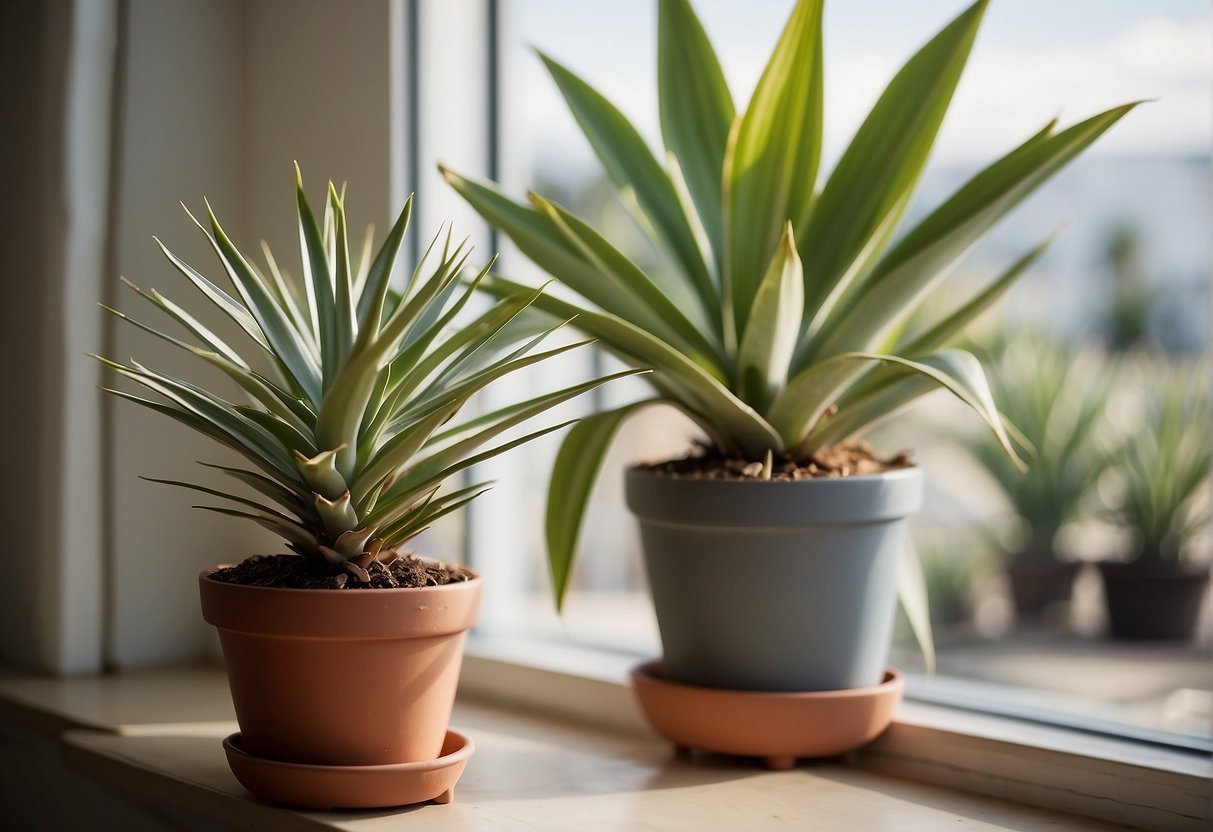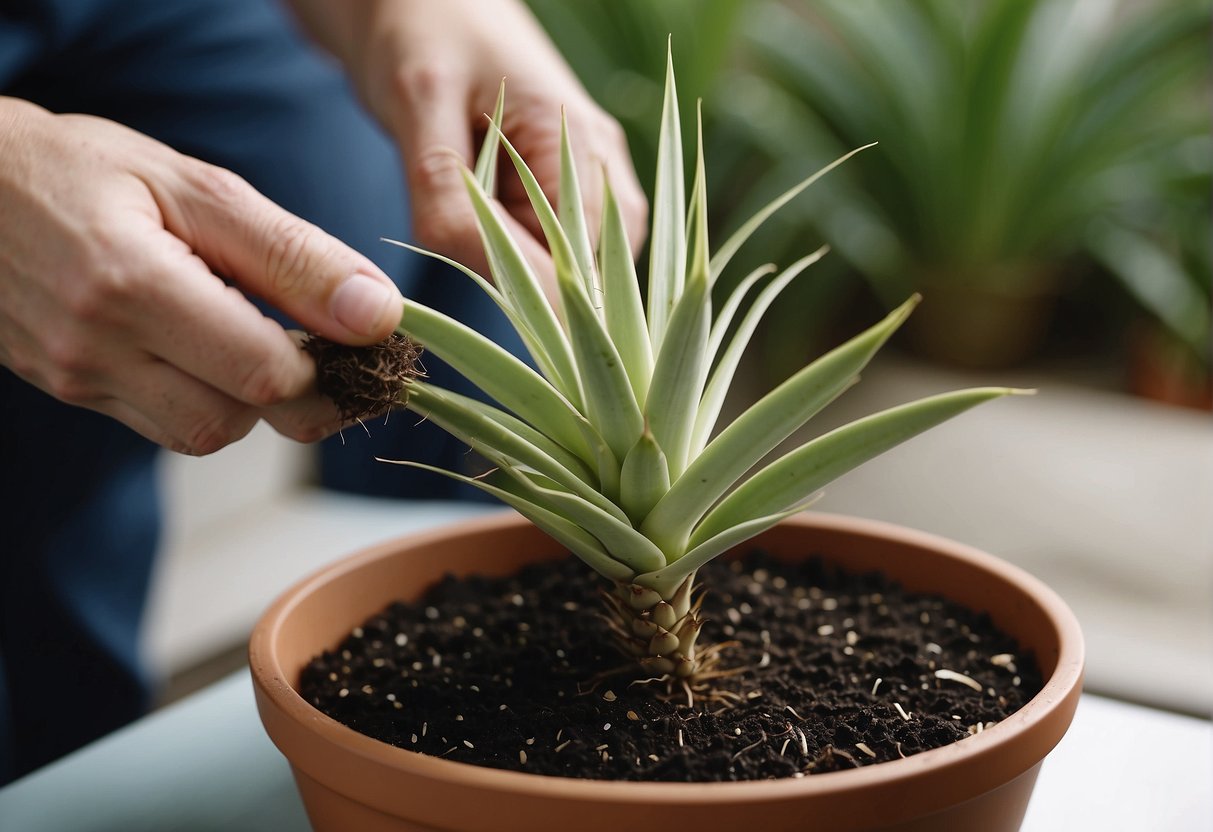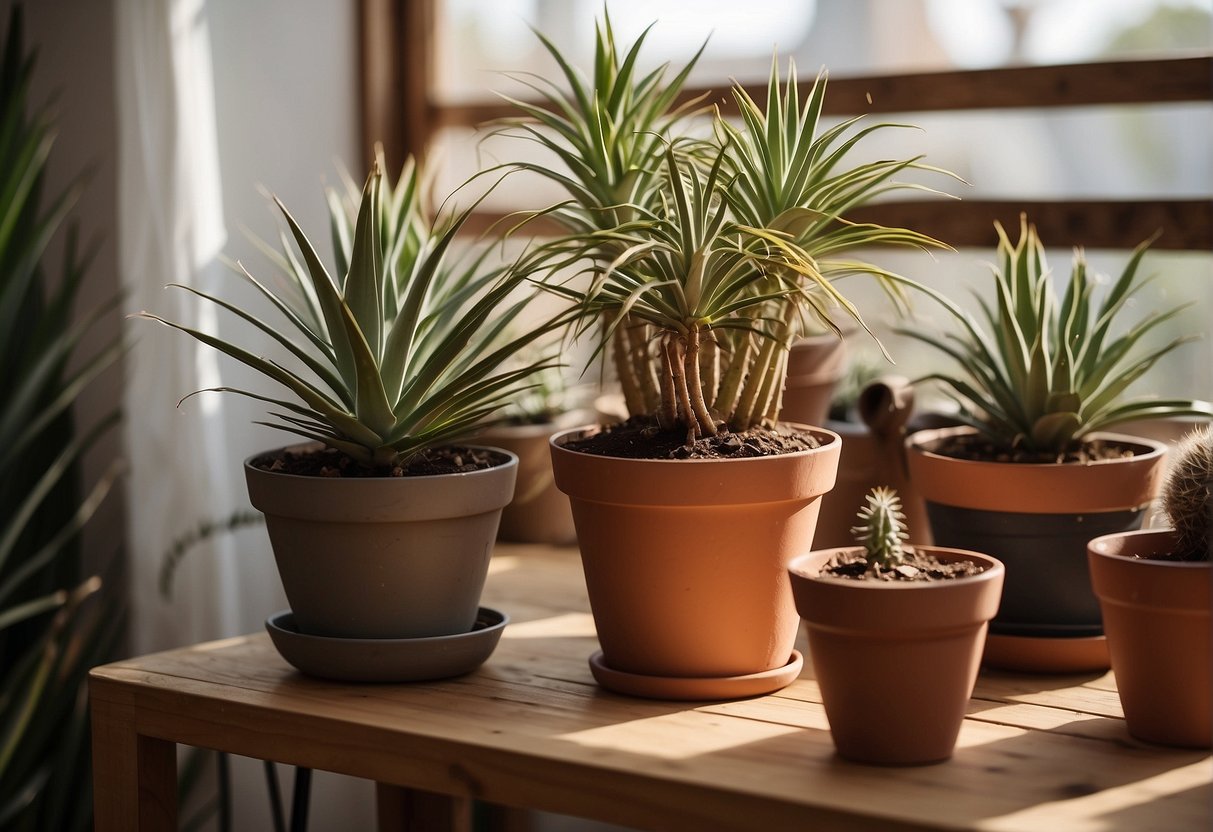Should you be in search of a plant that requires minimal upkeep and brings a desert vibe to your living space or garden, yucca plants stand out as a fantastic option. Originating from dry areas, these resilient plants are adaptable to various environments, which makes them perfect for cultivating both inside and outside. Nevertheless, yuccas do need appropriate attention to flourish. In this piece, we will guide you through the essentials of yucca plant care, including how to water, fertilize, prune, and propagate them.

First, we’ll dive into the basics of yucca plant care, including how to water and fertilize your plant, as well as how to deal with common issues like pests and diseases. We’ll also cover the best lighting and temperature conditions for yuccas, both indoors and outdoors. Next, we’ll discuss how to propagate and repot your yucca plant, so you can keep it healthy and thriving for years to come. Finally, we’ll answer some frequently asked questions about yucca plants, so you can feel confident in your ability to care for this unique and beautiful plant.
Key Takeaways
- Yucca plants are hardy and low-maintenance, making them a great choice for indoor and outdoor settings.
- Proper care for yucca plants includes watering, fertilizing, pruning, and dealing with pests and diseases.
- You can propagate and repot your yucca plant to keep it healthy and thriving, and there are many common questions and concerns about yucca care that we’ll address in this article.
Caring for Yucca Plants
Yucca plants are a popular choice for both indoor and outdoor gardening. They are hardy and require minimal maintenance, making them an ideal plant for those who are new to gardening or have limited time to care for their plants. In this section, we will discuss the optimal growing conditions, watering and feeding, and common pests and problems associated with yucca plant care.
Optimal Growing Conditions
Yucca plants are native to hot and dry regions, so they thrive in full sun and well-draining soil. They can tolerate a wide range of temperatures and are hardy in zones 5-11. When grown indoors, they prefer bright, direct sunlight and a temperature range of 60-80°F. Yucca plants can also tolerate low humidity levels, making them an ideal houseplant.
Watering and Feeding
Yucca plants are drought-tolerant and do not require frequent watering. Overwatering can lead to root rot, so it is important to allow the soil to dry out completely between waterings. When watering, make sure to saturate the soil thoroughly. Yucca plants do not require frequent feeding, but a balanced fertilizer can be applied once a month during the growing season to promote healthy growth.
Common Pests and Problems
Yucca plants are relatively pest-free, but they can be susceptible to mealybugs and scale insects. These pests can be removed with a cotton swab dipped in rubbing alcohol. Yellow leaves can be a sign of overwatering or underwatering, so it is important to monitor the soil moisture level. Leaf spot can also occur, which is caused by fungal spores in the soil. To prevent leaf spot, avoid overwatering and make sure the soil has good drainage.
Overall, yucca plant care is relatively simple and requires minimal effort. By providing optimal growing conditions, monitoring watering and feeding, and addressing common pests and problems, your yucca plant will thrive and add beauty to your home or garden.
Propagation and Repotting

Propagating Yucca
Propagating yucca plants is a great way to expand your collection or share your plant with others. The best time to propagate a yucca plant is during its active growing season, which is typically in the spring or summer.
One way to propagate a yucca plant is through stem cuttings. To do this, select a mature plant and cut a stem that is at least 4 inches long. Remove the lower leaves from the stem and allow the cut end to dry for a few days. Once the cut end has calloused over, plant the stem in well-draining soil and keep it moist. After a few weeks, the stem should begin to root and new growth will appear.
Another way to propagate a yucca plant is through offsets. These are small plants that grow from the base of the mature plant. To propagate an offset, carefully remove it from the parent plant and plant it in its own container with well-draining soil.
Repotting Yucca Plants
Repotting a yucca plant is important to ensure its continued growth and health. It’s best to repot a yucca plant every 2-3 years or when it outgrows its current container.
To repot a yucca plant, select a container that is slightly larger than its current one and has good drainage. Fill the bottom of the container with a layer of gravel or rocks to aid in drainage. Then, add a layer of well-draining soil. Carefully remove the plant from its current container and gently loosen any tangled or circling roots. Place the plant in the new container and fill in the remaining space with soil, leaving about an inch of space at the top. Water the plant thoroughly and allow it to drain before placing it in a bright, sunny spot.
In summary, propagating and repotting yucca plants can be a rewarding and easy process with the right knowledge and techniques. By following these tips, you can ensure the continued growth and health of your yucca plant collection.
Frequently Asked Questions

What are the optimal watering practices for a yucca plant?
Yucca plants prefer well-draining soil, so it’s important not to overwater them. Water your yucca plant deeply once a week during the growing season, and reduce watering during the winter months. Allow the soil to dry out between waterings and avoid letting the plant sit in standing water.
How should I care for a yucca plant during the winter months?
During the winter months, your yucca plant will enter a period of dormancy and require less water. Reduce watering to once every two to three weeks, and keep the plant in a cooler location with less direct sunlight.
What are the common issues with indoor yucca plants and how can I address them?
Common issues with indoor yucca plants include yellowing or browning leaves, root rot, and pest infestations. To address these issues, make sure your plant is getting the right amount of water and sunlight, and avoid over-fertilizing. If you notice signs of pest infestation, such as webbing or small insects, treat the plant with a natural insecticide.
How can I maintain the health of my yucca plant?
To maintain the health of your yucca plant, make sure it is getting the right amount of water and sunlight, and avoid over-fertilizing. Prune away any dead or damaged leaves, and repot the plant every two to three years to refresh the soil.
Is it necessary to prune yucca plants, and if so, how should it be done?
Pruning yucca plants is not necessary, but it can help keep the plant looking neat and tidy. To prune your yucca plant, use sharp, clean pruning shears to cut away any dead or damaged leaves. You can also trim back the top of the plant to control its height.
What is the best way to care for a yucca plant that has outgrown its space?
If your yucca plant has outgrown its space, you can repot it into a larger container or divide it into smaller plants. When repotting, choose a container that is one size larger than the current one and use well-draining soil. To divide the plant, carefully remove it from its container and separate the roots into smaller sections. Replant each section into its own container with fresh soil.














